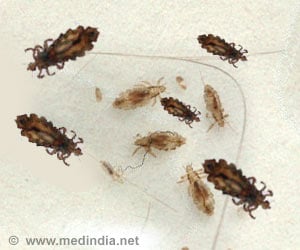A genetic analysis of head and body lice has led researchers to date their origin to about 190,000 years ago.

The new estimate, sheds light on a poorly understood cultural development that allowed people to settle in northern, cold regions, said Andrew Kitchen of Pennsylvania State University in University Park.
With little direct evidence, scientists had previously estimated that clothing originated anywhere from around 1 million to 40,000 years ago.
An earlier analysis of mitochondrial DNA from the two modern types of lice indicated that body lice evolved from head lice only about 70,000 years ago.
Many scientists believe that as body lice thrive in the folds of clothing, they likely appeared not long after clothes were invented.
Though well suited to gauging the timing of evolutionary events, mitochondrial DNA is a relatively small part of the genome.
Advertisement
Kitchen explained that it makes sense that people, or perhaps Neandertals inhabiting cold parts of Europe, started making clothes around 190,000 years ago, since both species had already lost most body hair and knew how to make stone tools for scraping animal hides.
Advertisement
The researchers calculated relatively fast mutation rates for both forms of lice, so the new age estimate for the divergence of body lice from head lice is a conservative one.
Kitchen said that it's possible for body lice to have evolved from head lice in only a few generations, according to laboratory studies.
No evidence indicates that head lice can evolve from body lice.
The study was presented at the American Association of Physical Anthropologists annual meeting.
Source-ANI
SAV










